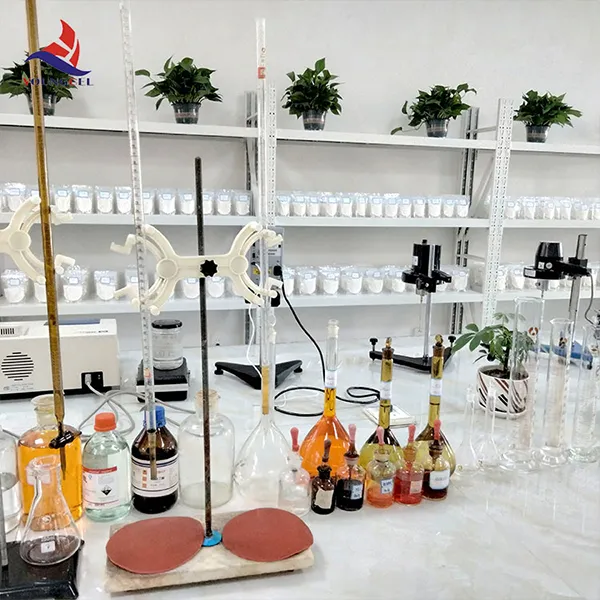Understanding Chemical Thickening Agents Their Importance and Applications
Chemical thickening agents play a crucial role in various industries, particularly in food, cosmetics, pharmaceuticals, and paints. These agents are substances that increase the viscosity of a fluid without substantially changing its other properties. The ability to modify texture, stability, and flow characteristics is essential for product formulation, making thickening agents indispensable in both everyday products and industrial applications.
What Are Thickening Agents?
Thickening agents can be natural or synthetic. Natural thickeners, such as starches, gums, and proteins, are derived from plant or animal sources. For instance, xanthan gum, derived from the fermentation of sugars by the bacterium Xanthomonas campestris, is widely used in gluten-free baking to enhance texture. Synthetic thickening agents, such as polyethylene glycol or polyacrylate, are designed in laboratories to meet specific application needs.
These agents work by increasing the interaction between molecules in a fluid, resulting in a thicker consistency. This thickening effect can improve the stability of emulsions, prevent separation, and enhance the sensory attributes of products.
Applications in Different Industries
1. Food Industry In the food industry, thickening agents are vital for creating sauces, dressings, and desserts that have appealing textures. For example, gelatin is commonly used in desserts like jellies and puddings to create a desirable mouthfeel. Guar gum and locust bean gum are often added to ice creams to prevent ice crystal formation, ensuring a smooth texture. Moreover, the use of these thickeners helps in controlling the release of flavors and maintaining the desired consistency of food products.
2. Cosmetics and Personal Care In cosmetics, thickening agents are employed to improve product stability and application. Creams, lotions, and gels often contain thickeners like carbomer or xanthan gum, which help create a luxurious texture while also providing a protective layer on the skin. These thickening agents can also help in stabilizing emulsions, ensuring that oil and water phases do not separate over time, thus increasing a product's shelf life.
'chemical thickening agent'

3. Pharmaceuticals The pharmaceutical industry relies on thickening agents for various formulations, including syrups, ointments, and suspensions. Hydroxypropyl methylcellulose (HPMC) serves as a thickener in many oral and topical medications, enhancing viscosity to ensure uniform distribution of active ingredients. This improves patient compliance and efficacy, as the thickened formulations are easier to administer and measure.
4. Paints and Coatings In the paint industry, thickening agents provide the necessary consistency for easy application and improved flow characteristics. Cellulose derivatives are commonly used to achieve the desired thickness and prevent settling of pigments. Additionally, they aid in creating a more uniform finish on surfaces, which is vital for aesthetic and protective purposes.
Advantages and Challenges
The use of chemical thickening agents comes with numerous advantages. They enhance product quality, improve stability, and provide desirable textures, making them vital across different applications. However, challenges such as the potential for allergens in natural thickeners, consistency in synthetic alternatives, and regulatory considerations must be addressed.
Formulators must also consider the interaction between thickening agents and other ingredients in a product. This can sometimes lead to unexpected outcomes, such as changes in taste, appearance, or effectiveness. Therefore, extensive testing and formulation adjustments are often necessary to achieve the desired balance.
Conclusion
Chemical thickening agents are essential across various sectors, playing a pivotal role in product formulation and quality enhancement. As industries evolve and consumer preferences shift, the demand for innovative thickening agents remains strong. Continuous research into new natural and synthetic options is likely to lead to improved functionality, sustainability, and health benefits. Understanding the importance, applications, and challenges associated with these agents allows manufacturers and consumers alike to make informed choices in their product selections.
-
Rdp Powder: Key Considerations for Wholesalers in the Building Materials IndustryNewsJul.08,2025
-
Key Considerations for Wholesalers: Navigating the World of Hpmc - Based ProductsNewsJul.08,2025
-
Hpmc Detergent: Key Considerations for WholesalersNewsJul.08,2025
-
Key Considerations for Wholesalers: China Hpmc For Tile Adhesive, Coating Additives, Concrete Additives, and MoreNewsJul.08,2025
-
Crucial Considerations for Wholesalers: Navigating the World of Construction MaterialsNewsJul.08,2025
-
Key Considerations for Wholesalers Sourcing Additive For Cement, Additive For Concrete, Additive For Putty from Additive Manufacturer Shijiazhuang Gaocheng District Yongfeng Cellulose Co., Ltd.NewsJul.08,2025




